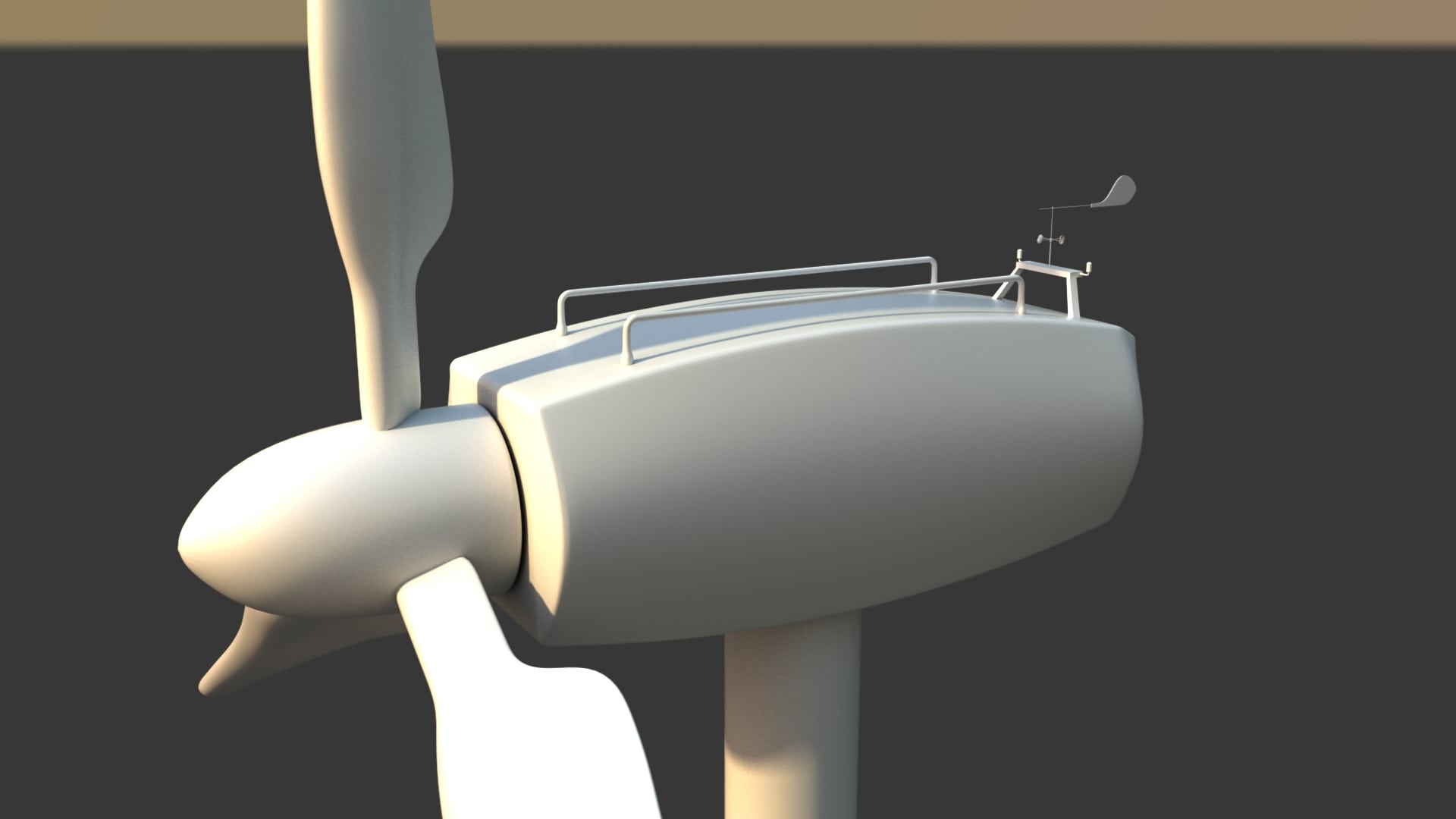Generally, when someone mentions an art medium (i.e. 3D or 2D), their mind goes to an example they can relate to. Specifically when “3D” is mentioned, movies from Pixar or Disney come to mind. However, 3D as a whole is applicable for many things. Here at ruef, we use 3D modeling programs to create assets for various purposes. Some assets are for instructional videos and others are simple images for a website.
Let’s take a closer look at what this could mean with an example of how a wind turbine is made and how it can be used.

For our 3D modeling artists to create detailed 3D models, we don’t have to become experts of a machine’s functionality. We use research and client-provided assets (photography, dimensions, video) to create multi-angle, highly detailed, photo-realistic renderings.
Big things have small beginnings. For our wind turbine, simple shapes are used to block out the general shapes of the structure.

Each part of the turbine is created using the simple shape first. If we cannot get the shape we are looking for with only one simple shape, we combine multiple shapes or objects to create the final form.
Working with the main body of the turbine, we mold the simple shape into complex shapes. All the lines shown on the asset are “handles” or “joints” that can be moved or manipulated to help create the shape we are looking for.
Once we have a finished 3D model, we can add it to the main project. We’ll often use a low-quality version of it as a placeholder until the project is closer to completion.
At ruef, one of our many passions is creating 3D models of highly-detailed, engineered products, landscapes and concepts with clarity and precision, all with the goal of helping clients with sales and communications efforts through infographics, interactive programs, videos, and animations.


